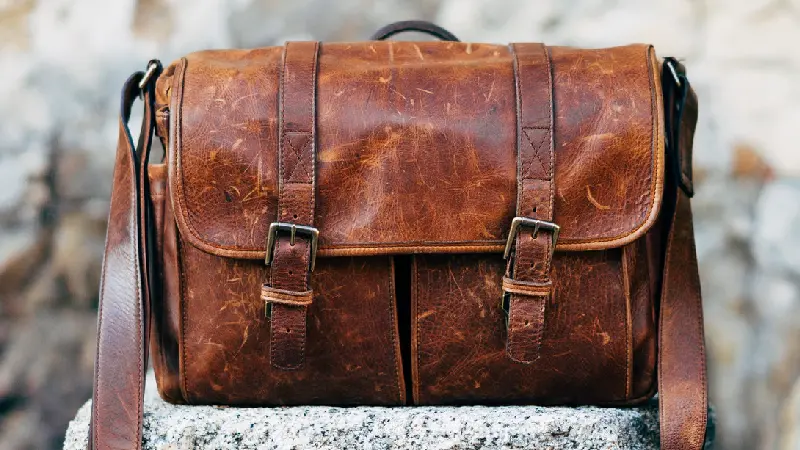Can You Use Acetone on Leather?
You’ve probably come across various online guides suggesting to use acetone-based products such as nail polish remover or household cleaning products to remove stains from your leather.
Should you use acetone on leather to remove stains or marks? Definitely not! You cannot use acetone on leather if you want to preserve it. Acetone will most often permanently damage your leather by discoloring it, causing it to peel and potentially weakening its fiber structure.
In this article, we’ll take a closer look at why acetone doesn’t work well with leather and why it’s actually damaging. We’ll also discuss some effective alternatives and what remedies are available if you have already used acetone on your leather.
Why Acetone Is Bad for Leather
Most likely, you come across acetone in various types of household products. Acetone can be found in nail polish removers, adhesive thinners, paint removers and even cleaning products.
In essence, acetone is a colorless solvent, meaning that it easily breaks down materials. Leather is particularly affected by the dissolving properties of acetone, as it is an extremely porous material.

In Summary:
- Acetone can damage the fiber structure of leather, leaving it brittle
- Acetone can discolor leather giving it a distressed appearance
- Acetone can cause peeling
Acetone can enter the pores of the leather and destroy its delicate and interwoven fiber structure, which can degrade it and make it brittle. Moreover, it can also affect the leather tan by discoloring it permanently and making it look distressed.
Acetone dissolves the tanning properties of your leather creating bleach-like spots. On the other hand, it can also darken your leather if the acetone moves the tan onto another area of your leather.
Even if you have applied a durable wax coating through effective conditioning methods, acetone has the ability to break it down and seep into your leather causing it to be damaged.
Important Tip: Keep acetone or any acetone-based products away from leather, as it can permanently destroy and discolor it. Use safer alternatives to get rid of stains instead!
Why Some Guides Incorrectly Recommend Acetone
You may have come across several guides recommending acetone to remove dirt, mold or ink stains from leather. While it may seem like a logical conclusion as acetone – like alcohol – is an effective solvent and is able to remove stubborn stains, it’s not suitable for leather.
Acetone is suitable for cleaning non-porous and non-sensitive materials, such as tiles, walls, wood or nails. They are often used to dissolve stains, mold or paint from material that often gets repainted.
However, this doesn’t work on leather, as acetone will remove the tan and destroy its structural integrity. Most guides incorrectly recommend what may work on some materials and apply it to leather. It does not!
Always remember, leather is a porous and extremely sensitive material that needs to be properly treated and conditioned. Always use non-aggressive and non-chemical agents or solvents on your leather articles, especially when cleaning them.
What Are Some Alternatives to Acetone?
If your aim is to clean your leather or remove stains, we recommend using less aggressive substances that are natural and that are compatible with the porous nature of leather. Let’s discuss some of them below:
- Leather Cleaning Products – These products are primarily designed to clean leather articles. Opt for a product that contains non-hazardous and natural ingredients to ensure that it doesn’t damage your leather.
- Vinegar & Olive Oil – Vinegar is a great alternative to acetone, as it’s made of acetic acid which can help to remove stains without causing damage to your leather.
- Rubbing Alcohol – Rubbing alcohol that has a concentration of at most 70% can also be effective when it comes to removing stubborn stains. It’s not as aggressive compared to acetone. However, it needs to be applied properly and with care.
With that being said, it’s also not recommended to use acetone on leather as a last resort. If you’ve tried all of the alternatives and are not able to remove the stain or spot from your leather, it’s best to send it to a professional leather cleaning service.
How to Undo the Effects of Acetone on Leather
We’ve discussed the two main problems of the effects that acetone has on leather, which make them incompatible. Firstly, it can damage the fiber structure and secondly, it can often discolor it.
Another problem with acetone is that this solvent dries extremely fast. This means that after it’s applied to leather, it removes the tan completely or moves it to another location and then dries up relatively quickly.
If you’ve already used acetone on your leather product leaving it damaged, there is very little that can be done to save it, unfortunately. Let’s discuss the two recommended options.
Option 1: Re-Dying Your Leather
One option that is able to repair your acetone-damaged leather is to re-dye it. By re-dying your leather, you are essentially stripping off the top coats, allowing your leather to absorb the new dye.
Before you dye your leather, it’s important that you remove the current tan along with any type of coat. For this, we would recommend using a pre-dye prep formula such as Fiebling’s Deglazer or Fiebling’s Dye-Prep.
Option 2: Send Your Leather to a Professional
If you’re unable to re-dye the leather yourself and have tried all of the alternative methods, you should send your leather to a professional. They’re able to assess the damage of the acetone on your leather and advise what the next best steps are.
They may try to apply a more potent, yet unharmful cleaning solution to it or recommend that you get your leather re-dyed. In some extreme cases, where too much acetone has been used, there may not be a suitable remedy.
Conclusion
Under the bottom line and to reiterate, please keep any acetone or products that contain acetone away from your leather for the various reasons outlined in this article. While they are acceptable for certain types of materials, they can permanently damage leather.
Instead, opt for leather cleaning products that contain non-harmful and natural ingredients. If your leather piece is of significant value to you, seek advice from a professional.

About Gerrit
Co-Founder, Researcher & Writer At Leatherskill
I’m a leather enthusiast who spends most of his free time crafting, researching, and writing about the many facets of this versatile material. Thanks for reading!

